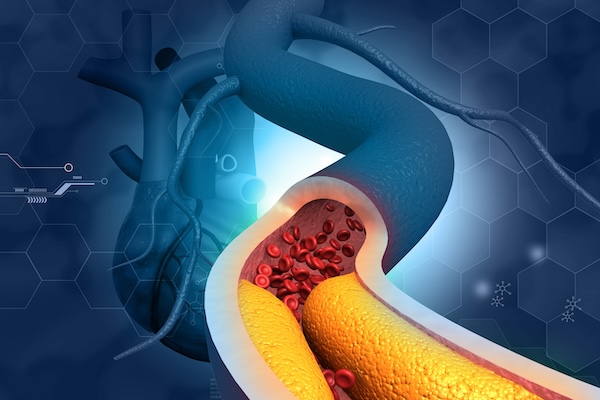
Part of the Miami Heart Study, published in 2024 in the Journal of American College of Cardiology, “Serum lipoproteins are associated with coronary atherosclerosis in asymptomatic US adults without traditional risk factors.”
- Participants were 40-65. 1,033 participants enrolled.
- No evident cardiac issues at enrollment. Excluded if high blood pressure, diabetes, smoker, or on a statin.
- Cardiac calcium scans and CT angiograms were done for baseline. Labs were done as well, looking at LDL, HDL, ApoB
What did they find?
- More than 1/3 of the participants had coronary plaques on CT angio. 3% had evidence of a high risk plaque, and 2% had blockage of over 50% in an artery.
- 25% had a coronary calcium scan above zero, indicating early calcification of the arteries. 4.5% of these patients had a score above 100, indicating moderate heart disease.
- The proportion of those with a plaque correlated with LDL. For each 10mg/dl increase there was a 13% increase in risk. For each 10mg/dL increase in ApoB, there was a 20% increase in risk.
- ApoB seemed to have a stronger correlation that LDL, which they stated was expected
- Risk increased with age
- Higher for men than women
They found that even in the super low-risk group (systolic BP less than 120, diastolic less than 80, BMI less than 25) which were mostly women, there was still a 21% rate of atherosclerosis.
How Can Biohackr Health Help?
TEST, TEST, TEST: I know we sound like a broken record, but cholesterol is a place where you can truly help reverse your risk.
- We offer a comprehensive cholesterol panel, which includes ApoB, which is thought to be a better indicator of atherosclerosis.
- Cardiac calcium scan. We offer it as part of our Biohackr Benchmark program.
We found this study interesting, as ALL the participants were deemed lower risk. They didn’t have diabetes, they weren’t smokers, they didn’t have high blood pressure. Though this is a low risk group, with no evidence of any issues clinically, 25-35% of them were found to have changes in their heart blood vessels. These changes correlated with cholesterol levels, particularly ApoB and LDL.
Prevention and Knowledge: You can’t know your status and risk unless you test. And if you have risk, then treat. The current biohacking and healthspan/lifespan advocates want your ApoB to be around 30-40 and your LDL to be below 100. This may conflict with traditional medical doctors who wait for “abnormal” or “high” levels before they offer treatments. We are trying to optimize and prevent. Read other blogs on the data.